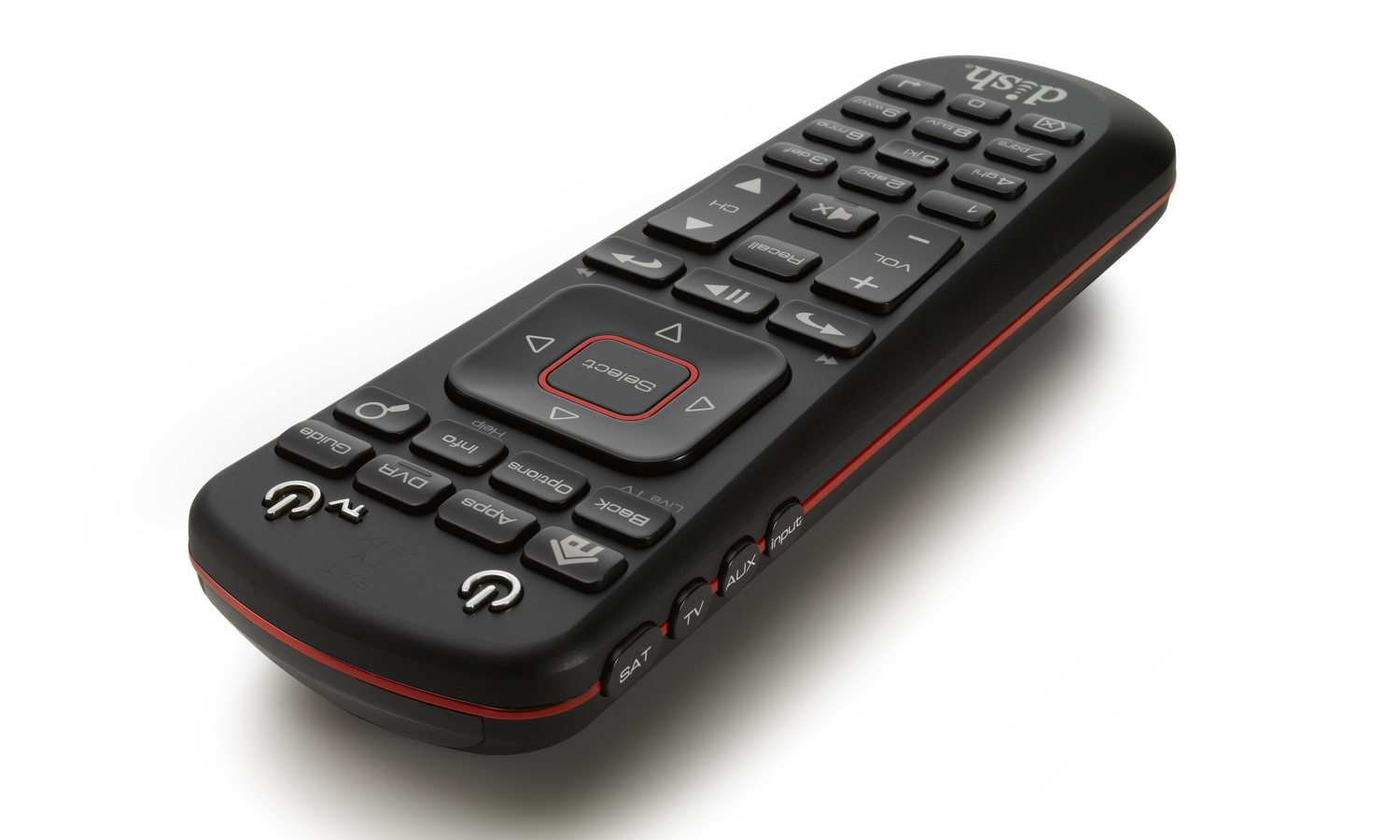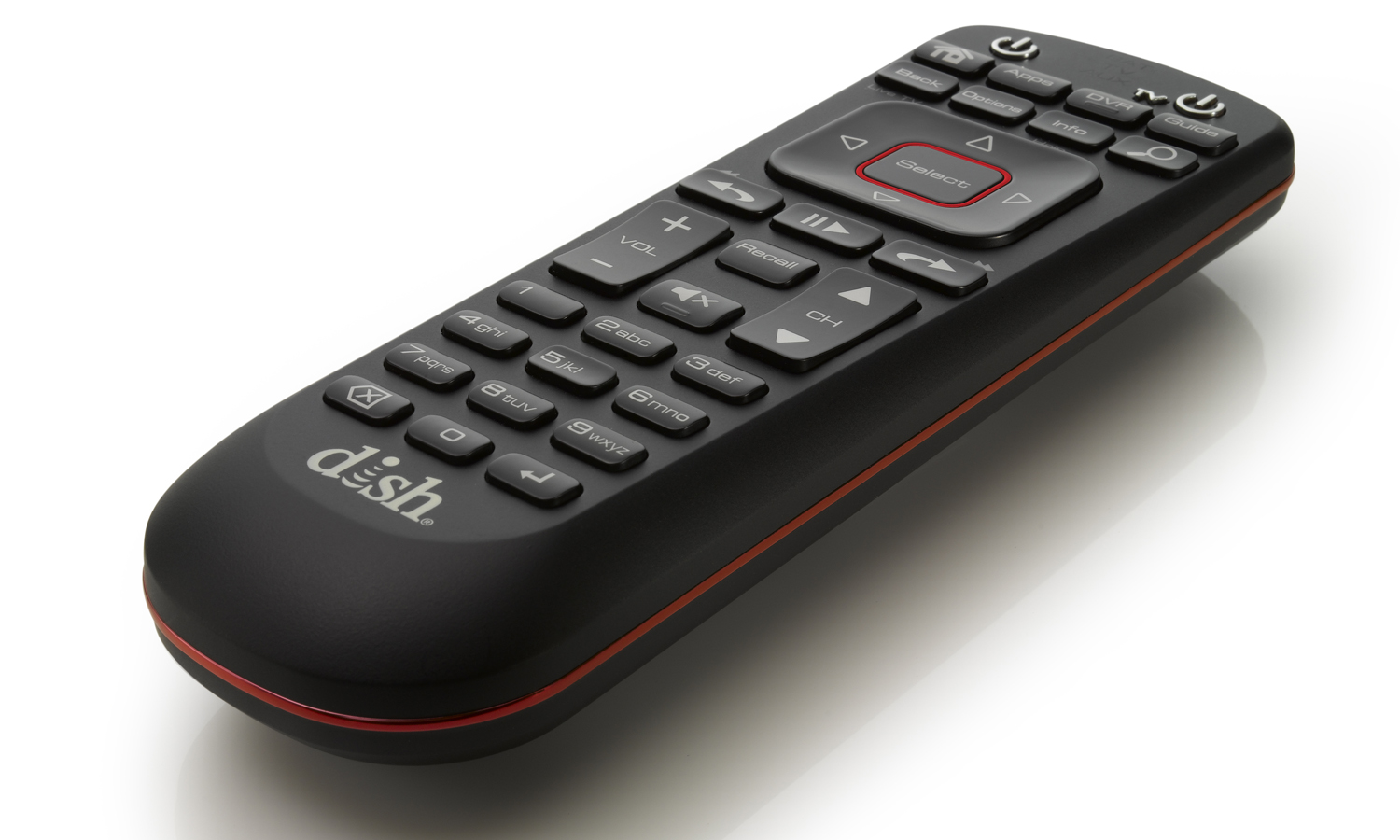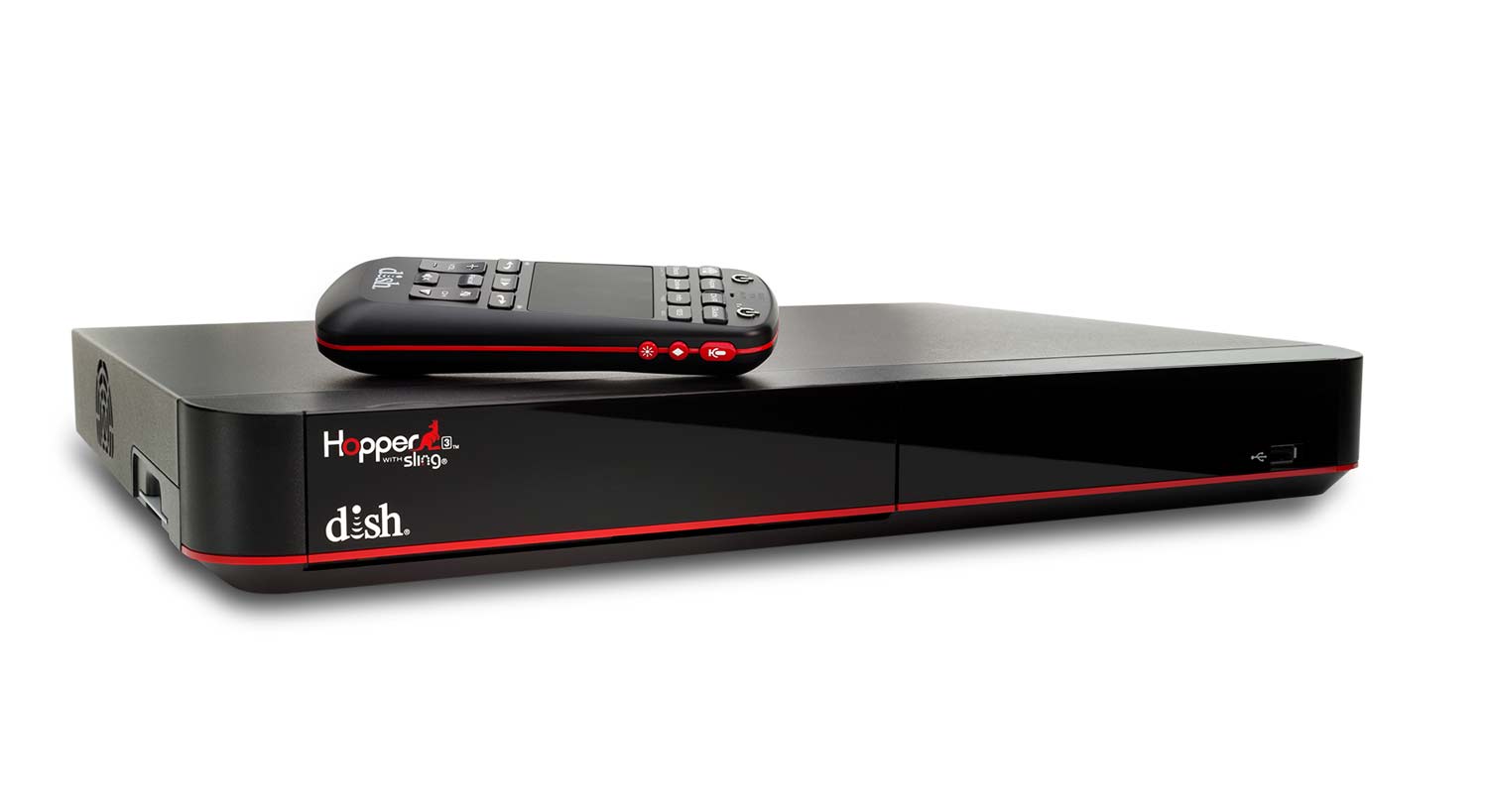Tom's Guide Verdict
Dish customers would be wise to upgrade to the Hopper 3, which can record up to 16 shows at once, streams 4K, and lets you watch four games at the same time.
Pros
- +
Can record up to 16 shows at once
- +
Smaller remote control
- +
4K video ready
- +
Faster performance
Cons
- -
Limited 4K content
- -
Can't automatically copy settings and recorded programs from older Hopper
Why you can trust Tom's Guide
Dish has consistently been the leading innovator in delivering over-the-air TV to your home, and with the Hopper 3, the company is continuing that tradition. Dish's newest DVR brings with it a number of improvements. The feature that will have the most immediate impact is the ability to record up to 16 shows at once. The DVR also boasts faster performance, a simplified remote and the ability to let you watch up to four shows at once. However, with the Hopper 3, Dish is looking to the long term, too: This receiver can stream 4K video, and can record it, too — when that content finally becomes available. Though there may not be much 4K content to watch now, this will be a DVR worth keeping.
Editor's note (August 2019): This review was updated to reflect Dish compatibility with Google Assistant.
Installation and Setup
To receive 4K satellite streams, your Dish antenna needs to be upgraded. To complete this process, the Dish service technicians replaced the "LNB" (the little thing on the front of the dish), which took about 15 minutes. Then, they removed the older Hopper and replaced it with the new one, connected it to a 49-inch Sony 4K TV (a larger version of this model that we reviewed) and went through the whole setup process. In all, it took about 45 minutes from start to finish.

Because you're swapping out your Hopper, you'll lose all of your recordings, as well as any recordings you had scheduled. After the new Hopper is installed, you'll have to reprogram the DVR to record your favorite shows. If you want to save the recordings from your old Hopper, you'll have to transfer them to an external hard drive and then transfer them to your new Hopper. Here's how to do it.
Hopper 3 users can also add a 4K Joey receiver (a smaller box used with your secondary TV), which is much flatter than previous versions. It also lacks tuners of its own, as all of that is now handled by the Hopper. However, Dish TV's wireless Joey, which doesn't require a separate coaxial cable to run from the dish to the receiver, has yet to be updated to support 4K streams.
Searching is a lot faster on the Hopper 3.
The Hopper 3 costs $15 per month and can record up to 2TB, roughly 500 hours of HD content. It also has 16 tuners. Each 4K Joey costs $7 per month.
MORE: The Best Streaming Video Services for Cord Cutters
Interface
With the new Hopper, Dish updated its on-screen interface. Most noticeably, the blue-themed menus have changed to black and white with red accents.
The channel grid now takes up much more of the screen, and the live-TV window is relegated to the upper-right corner. By default, the grid is black with white text, which I found difficult to read in some settings; fortunately, you can change it to black text on a gray background.
Compared to the previous interface, searching is a lot faster. Oftentimes, on the Hopper 2, when I would select a letter, there would be a delay of a few seconds, and sometimes, the search would get stuck on a letter. Now, the results are not only returned nearly instantly but are also broken up according to genre (TV, movie, sports, and person). This lets you search either for a show or movie title, or an actor's name.

When you switch to a new channel, a translucent bar at the top of the screen briefly appears to show you program information as well as the amount of time left.
Remote
The new remote that comes with the Hopper 3 is much smaller than Dish's previous remotes, and it has a different layout as well. At the top are two rows of four buttons for the most-accessed features: Home, Apps, DVR, Guide, Back, Options, Info, and Search. Below those buttons is a large, four-way directional pad. Below that are DVR controls, as well as volume and channel rockers, and at the bottom, there's a number pad.

The left side of the remote has buttons for Satellite, TV, Aux, and Input. Previously, these buttons were at the top of the remote.

This new layout makes a lot more sense, given the way people navigate their TV these days. With far fewer buttons, there's not as much to remember, and the smaller size of the remote makes everything much easier to reach with your thumb.
Dish also offers a voice remote for $30, which lets you speak into the remote to search for shows and more just by speaking. Here's our in-depth review of the Voice Remote.
Alexa Compatibility
Dish owners who have an Amazon Echo, Echo Dot, or Tap can use Amazon's voice assistant to control their Hopper, to a limited extent. After linking your Dish receiver to your Alexa account, you can say such things as "Alexa, show me Tom Hanks movies" or "Alexa, pause." I found that the Hopper responded nearly instantly to my voice commands.
However, you can't ditch the remote completely just yet. A search for "Law & Order" episodes brought up a list on the right side of the screen, showing all of the permutations of the show currently airing. However, I couldn't tell Alexa to scroll down the list to pick the one I wanted. I had to specify both the show and the channel, such as "Law & Order on TNT," for example.
Using Alexa, you can also pause and restart shows—something really handy—but you can't say "Previous Channel" to go to the program you were watching on another channel. Occasionally, a search would return a result that filled the majority of the screen—such as the aforementioned Tom Hanks query—and there's no way to tell Alexa to simply return to what you were watching. You have to specify both the program and/or the channel.
MORE: The 45 Best Alexa Skills
Google Assistant compatibility
Similarly, Dish is also compatible with Google Assistant, which appears as a menu item next to Alexa. As with Amazon's voice assistant, you can use Google Assistant to change channels, record programs, search for content on Netflix and YouTube, and control smart home devices.
Moreover, Dish has a new remote control with a dedicated Google Assistant button, so you don't need a separate smart speaker to use the service. Dish customers can get a new remote for free, and check their eligibility, at mydish.com/voice-remote.
4K Video
Ultra-HD 4K TVs are dropping in price, so it behooves cable and satellite providers to offer content capable of this high resolution.

However, the only way to watch 4K content is through services such as Netflix, as well as through Dish's Video On Demand. It's also important to note that because all of the 4K content offered through Dish is on-demand, you can't record any of it to the DVR itself.
You have to subscribe to Netflix's premium streaming package ($11.99 per month) and have an Internet stream of at least 25 MBps, which not only gives you ultra-HD content but also lets you stream content to up to four screens at once.
You can access Netflix through the main Hopper menu; after logging in to your Netflix account, any 4K Netflix content will have an "Ultra HD 4K" tag next to it.
Sports fanatics — or those who can concentrate on more than one show at once — will like the Hopper 3's new Sports Bar mode
At the time of this review, House of Cards, Daredevil, Narcos, Jessica Jones — and even Fuller House — are among the shows available in ultra HD through Netflix. There's an "Ultra HD 4K" featured line, and you can also search for ultra-HD content by typing "4K" or "UHD" in the search field.
Conveniently, in Dish's Video On Demand menu, 4K movies and shows are tagged as such. However, the selection was pretty limited when I looked at it — only 19 titles, which included movies such as Chappie, The Amazing Spider-Man, and American Hustle.
Competitor DirecTV also offers a limited amount of 4K content and has 4K video on demand. However, it is airing the Masters Tournament, as well as 25 Major League Baseball games, in 4K.
MORE: Our Favorite 4K (Ultra HD) TVs Available Now
Sports Bar Mode
Sports fanatics — or even those who can concentrate on more than one show at once — will like the Hopper 3's new Sports Bar mode, which divides a 4K or HDTV screen into quadrants, each with the ability to display a different program. It's great for days when you want to watch more than one program at once, such as a Saturday or Sunday during football season, or the early rounds of the NCAA basketball tournament. Of course, you can use this for more than watching just sports; you can change the channel on any segment to whatever you choose.
It helps to have a large TV for this. I used a 49-inch Sony 4K TV, and from a distance of about 12 feet, each feed was large enough that I could make out a hockey puck gliding across the ice. People with smaller sets may have a more difficult time.
Dish doesn't offer any 4K TV channels yet, so for now, you'll have to watch most 4K content through Netflix
To enable this view, press Options during Live TV, select Picture-in-Picture, select MultiView and select the channels you want. You can show either two feeds side by side, or four feeds in each quadrant of your TV. Use the directional controls on the remote to select each feed; the active feed (the one through which you'll hear audio only) will be surrounded by a red border. Within each window, you can choose the channel you want to watch.
I found this to be a pretty cool feature, but it's a little confusing to navigate at first. More than once, I accidentally closed all but one of the feeds and had to reopen the MultiView mode.
Bottom Line
If you're a current Dish customer, upgrading to the Hopper 3 — especially if you have a lot of DVR recordings — is a no-brainer. In addition to its ability to record up to 16 shows at once, it has a more intuitive interface, and a simplified and more comfortable remote. Plus, with its ability to show 4K content, it's ready for the future. However, other cable and satellite companies are quickly catching up.

Michael A. Prospero is the U.S. Editor-in-Chief for Tom’s Guide. He oversees all evergreen content and oversees the Homes, Smart Home, and Fitness/Wearables categories for the site. In his spare time, he also tests out the latest drones, electric scooters, and smart home gadgets, such as video doorbells. Before his tenure at Tom's Guide, he was the Reviews Editor for Laptop Magazine, a reporter at Fast Company, the Times of Trenton, and, many eons back, an intern at George magazine. He received his undergraduate degree from Boston College, where he worked on the campus newspaper The Heights, and then attended the Columbia University school of Journalism. When he’s not testing out the latest running watch, electric scooter, or skiing or training for a marathon, he’s probably using the latest sous vide machine, smoker, or pizza oven, to the delight — or chagrin — of his family.
-
quadcitynerd Its to bad the service does not come close to deserving this hardware. I had Dish for 6 years and now I have DirectTV which I have had now for 2 years and the difference is night and day. I will NEVER go back that that crap Dish EVER again!Reply -
David_348 Avoid the Hopper3 at all costs. There is a significant engineering defect in the hopper 3 software which will cause you to lose all of your recordings and your ability to record primetime shows automatically. The only recourse that Dish has to to replace your Hopper3 and hope that the defect does not appear in the new firmware. If you have ever replaced a hopper unit, resetting up your timers and other settings is a time consuming exercise. I am on my 3rd Hopper. Looking to move to another serviceReply -
Nei1 I wish Tom's Guide would be more about making consumers the priority, instead of repeating the marketing blather written by manufacturers, companies, and corporations.Reply
Furthermore, the Chrome-Notification said this article would be about the newest, bestest DVR. Being Digital Broadcast oriented, I got all excited. Then the dog got excited, then the cat got excited. Then when I got to the article, that's when I found out it was about a satellite ?? receiver, and it was a big let down. Then the dog got let down, then the cat got let down.
By re-writing the title for the Chrome-notification to make it more titillating, additional inaccuracies and ambiguities are the result. For instance, removing the word "Dish" from the notification. It would be more helpful if the notification simply repeated the title of the article instead of trying to improve upon it. Bet you the authors would agree.

